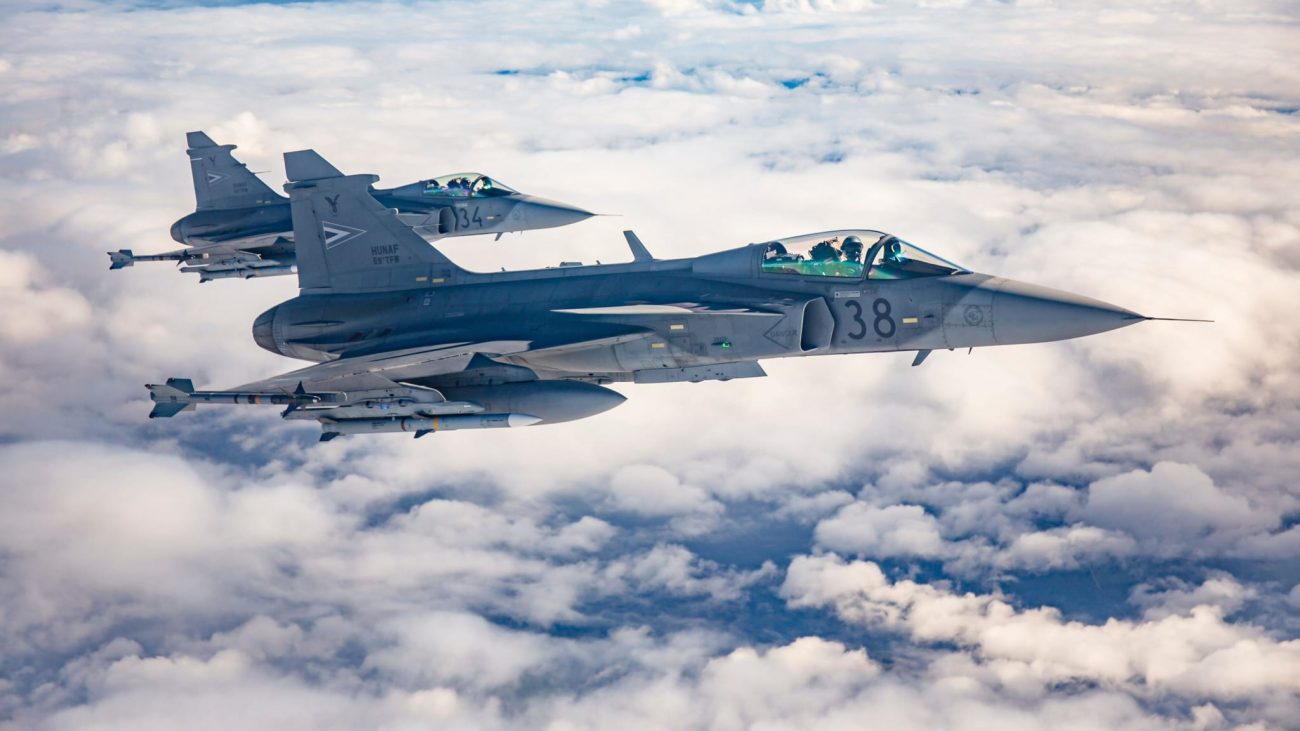On the 70th anniversary of a Swedish Air Force C-47 Dakota being shot down over the Baltic Sea by Soviet fighter aircraft, the Swedish Air Force flew a commemorative flight in the same region on June 13.
OOPS! China Claims ‘World’s Largest Telescope’ Picked Up Signals Of Alien Civilization; Deletes Report After It Goes Viral
The Swedish Air Force organized a formation of one Gulfstream S 102B Korpen intelligence-gathering aircraft and two JAS 39 Gripen fighter jets that flew together to honor the crew killed in the event.

The Air Force carried out the flight formation in coordination with Sweden’s National Defense Radio Establishment, Försvarets Radioanstalt, or FRA.
This branch of the Swedish Defense ministry is mainly accountable for signals intelligence (SIGINT) collecting and assisting national cybersecurity operations.
Flygvapnet och FRA hedrade idag de omkomna på DC-3:an för 70 år sedan med att flyga dagens signalflygplan eskorterat av två JAS 39 Gripen, över haveriplatsen i Östersjön, Tre Vapen, Bromma flygplats och FRA på Lovön i Stockholm. @Forsvarsmakten pic.twitter.com/28kmC8R4Gi
— FRA – Försvarets radioanstalt (@FRAdioanstalt) June 13, 2022
On June 13, 1952, a Swedish Air Force DC-3 transport plane carrying eight crew members disappeared over the Baltic Sea. The loss of this aircraft was one of Sweden’s most significant Cold War episodes, and it remained highly classified for a long time.
The twin-engine aircraft was reportedly geared for SIGINT missions and had been operating over the Baltic Sea when it went missing.
The C-47 and FRA ground stations had been tracking a Soviet Navy exercise off the coast of Estonia, which was then called the Estonian Soviet Socialist Republic, in the days leading up to the June 13 sortie (SSR).
At 11:23 that day, the C-47 sent out a disrupted message. However, the crew did not respond to the contact attempts. The plane went missing later that day, prompting search parties to look for it.

A Consolidated Catalina aircraft, Swedish Air Force designation Tp 47, serial 47002, was one of the planes involved in the search. It was shot out of the sky by a Soviet aircraft on June 16, and a West German ship rescued its five crew members.
All search missions, as well as hopes of finding the C-47, were ended on the day of the second shoot-down. Following the Soviet Union’s disintegration in 1991, it came to light that Soviet air defenses had taken down the C-47.
Details of the C-47’s entire mission were kept secret for many years, with the Swedish authorities claiming the plane had crashed while on a navigational training flight.
The official Swedish record now stated that the C-47’s intelligence-gathering flight had been arranged two days in advance and that the plane took off from Bromma at approximately 9:00 a.m. local time on the 13th.
The aircraft was outfitted with SIGINT equipment supplied by the UK. It’s unknown what the SIGINT specialists were looking for, although a Soviet air defense radar reported to be near the coast of the Latvian SSR could have been the mission’s objective.
Unfortunately, the Soviet military was tracking the movement of the Swedish aircraft, and at 10:44 a.m, a MiG-15bis fighter was deployed from the alert site at Tukums, outside Riga, to follow the spy plane.

Captain Osinskij, piloting a Soviet Mikoyan-Gurevich MiG-15, was instructed to intercept the foreign aircraft and open fire. The bullets damaged the airframe and engines, igniting a fire.
Osinskij claimed to have witnessed two parachutes emerge from the downed plane. However, he retracted his claim, claiming that he was given a pre-written statement at the time.
Missing Aircraft
Attempts to locate the missing aircraft began in 1989, but they were useless because the crash site was unknown. Additionally, the main challenge in these expeditions was a lack of resources and technology.
Aircraft was finally discovered in 2003 thanks to the combined efforts of an entrepreneur and former Swedish Air Force pilot named Jallai and a business called Deep Sea Productions after painstaking investigations of archival material narrowed the search region.
On June 10, 2003, a sonar scan of the Baltic seabed disclosed a distinctive silhouette at a depth of 410 feet (125 meters). The Swedish government then decided to salvage the plane to find out what happened to the crew.

Components from the plane were spread over a 2,000-foot radius, necessitating a technique known as freeze dredging to recover them. This process entailed freezing chunks of seabed silt and bringing them to the surface to be extracted offsite.
One of the C-47’s wings had detached after the accident, and the other was separated from the fuselage to salvage the plane. Meanwhile, a one-person submersible was utilized to retrieve other components and secure the fuselage in a steel frame to sustain its weight.
During the recovery, the remains of four crew members were discovered and traced using DNA samples from living relatives. The hulk of the aircraft was later displayed at the Air Force Museum in Linköping, Sweden.
The report of the technical inquiry verified that all eight men were seated at the time of the impact. It also found that the crash was so intense that survival was out of the question.
Currently, the region is experiencing considerable instability due to the Ukraine war and Sweden looking to join NATO military alliance.
- Contact the author at ashishmichel@gmail.com
- Follow EurAsian Times on Google News




